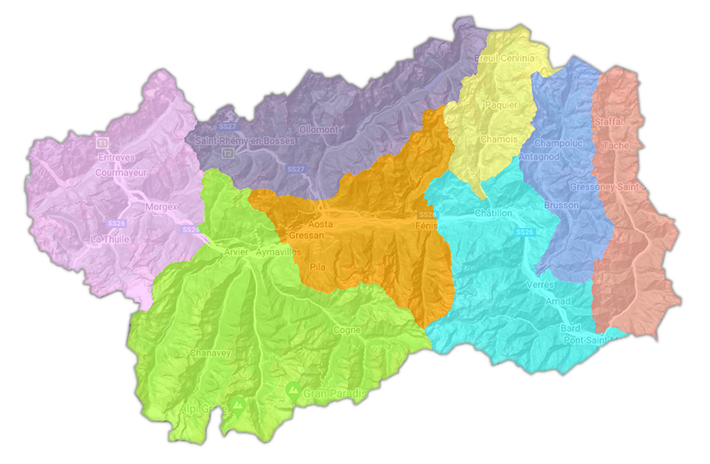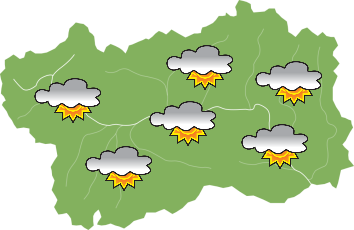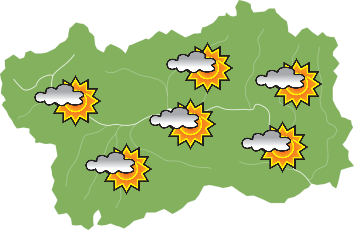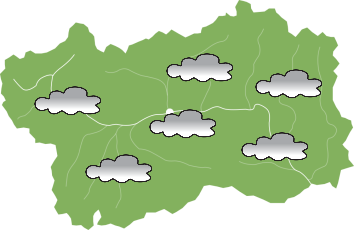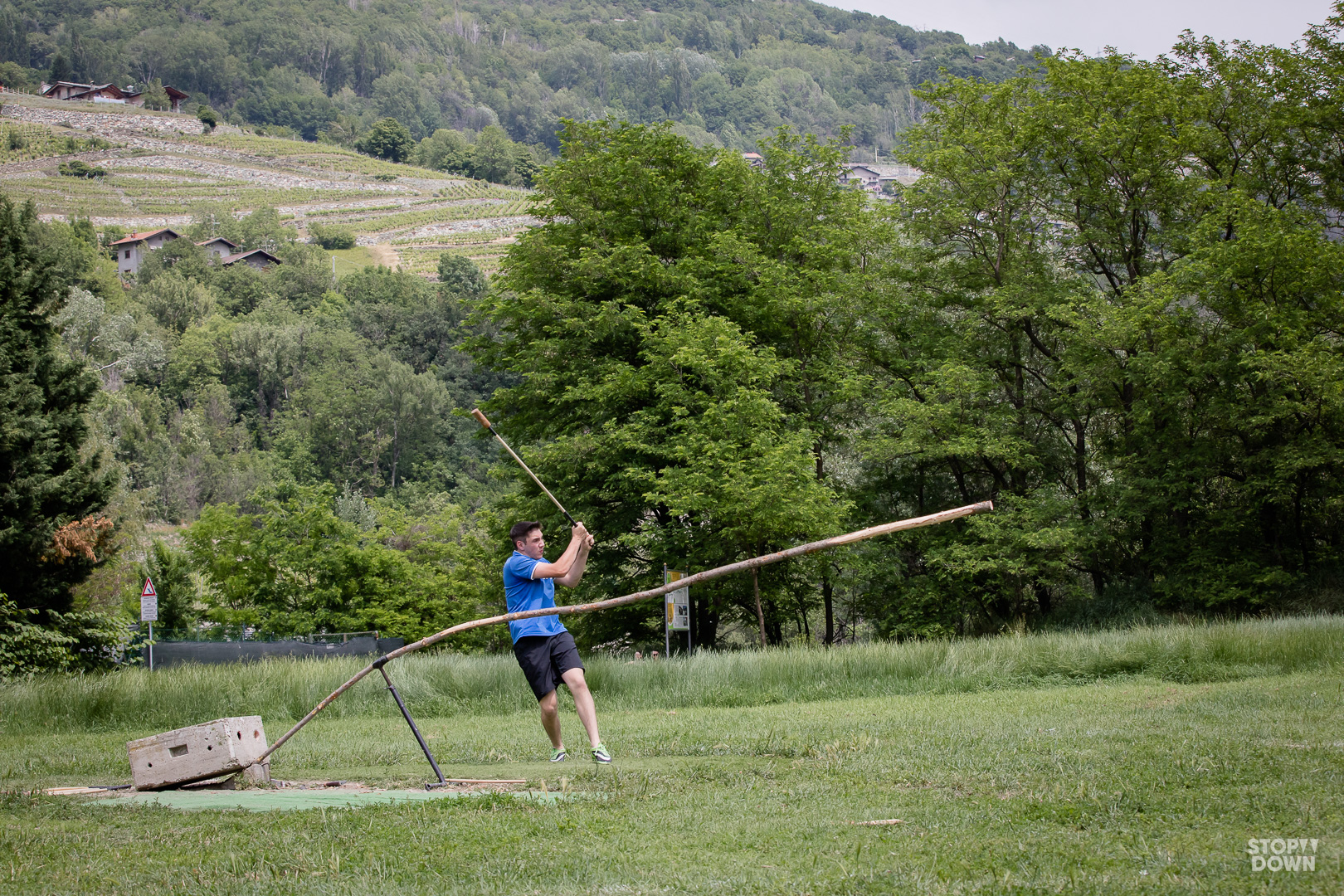
TYPE OF GAME
The first phase involves using a bat to hit the ball, which must fall on the field without being intercepted by the opposing team; in the second phase the ball is hit using a wooden racket.
OBJECTIVE
In the first phase, make the ball fall on the field defended by the opponents; in the second phase hit the ball as far as possible.
GAME MATERIALS
A small ball ("tsan") which is balanced on a long branch fixed slanted into the ground ("pertze"); a bat ("baquet") to hit it with; some small wooden sticks ("palet" or "boquet") to intercept it before it hits the ground; a type of racket ("piota"), used to hit the ball as far as possible in the second phase of play.
HOW TO PLAY
The game is divided into two distinct phases. the first, similar to baseball, involves a player of a team batting (tsachà), and another team in defence. The pitcher must hit the "tsan", balanced on the "pertze", and try to make it fall to the ground, inside the play area. A pitch concluding with the "tsan" falling on the field of play is called a "boun-a". The defending team must try to catch the "tsan" with a "palet" (or "boquet") before it hits the ground: catching is signalled by the dry noise of the ball when it hits the wooden stake, also thrown in the air. When this happens, the pitcher is withdrawn and replaced by another player; this also happens if the pitcher hits the "tsan" out of the playing field three times in a row. When all the players on a team have received the tsachà, we move onto the 2nd phase: each pitcher is entitled to a new series of pitches, now called "paletà" or "paletoù", equal in number to the valid pitches ("boun-e") achieved during the first phase. However, this time the "tsan" is not placed on the "pertse", but pitched into the air ("servìa") by an opponent, specialising in this role. The pitcher, using a type of racket ("piota"), must check the "servìa", lifting the "tsan" once or a maximum of twice and then hitting it as far away as possible. The distance to which the "tsan" is hit is converted into points: a point per metre. When all the pitchers have taken the "paletà" to which they were entitled, the teams change over. In a normal game, each side usually has two innings and two periods in the field, and lasts three and a half to four hours. The team with the most metres, or rather, points wins, with the entitled "paletà"; however, if the teams score within forty points or less of one another, the result is considered a draw.
HOW TO PLAY
There is a spring and autumn championship.
ORGANISATION
There are around twenty clubs that train around forty teams, as well as the junior teams. Each team has twelve players and two reserve players. Championships are organised into Series A, B and C.
TOOLS
"Pertse": a thin, flexible section measuring 4.5 - 5 metres long, set slanted into the ground. It is held up by a support ("bes") that terminates in a fork (in ancient time a branch, now a produced metal piece). The end of the "pertse" must be around 1.60 to 1.80 metres from the ground. The "pertse" has a small grooved area ("tsapot"), on which the "tsan" is balanced.
"Tsan": the ball, which must be 4 centimetres in diameter, made from box wood and weighing 30 - 35 grams; a part of the spherical surface is flat ("lo plat") to allow the ball to stay balanced on the "tsapot". The "tsan" is painted black or white.
"Baquet": a wooden, 100-140 cm bat that terminates with a solid, wooden "head" .
"Palet" or "boquet": wooden stake used to catch the "tsan" before it hits the ground. It measures 40 x 11 centimetres and is 4 cm thick. It is normally made lighter with holes that are also used to create a harmonic casing to amplify the noise of the knock against the "tsan".
"Piota": another wooden stake, terminating with a sort of handle; this tool is used to control the "tsan" pitched by the opponent ("servia") and to hit it as far as possible on the second or third bounce.
THE PLAYING FIELD
A playing field at least 135 metres long, without any limited length. The following reference points, marked on the ground, are used for the first part of the game:
- a 30 metre long line (AB), 32 metres (AE) from where the "pertse" is planted into the ground (P); if the "tsan" touches the ground in front of the line, the pitch is "bad", even if the "tsan" should then pass over it by bouncing or rolling. In fact, this line is called the "bons frontali" or, in Patois, "bitse"; the players defending the field cannot pass over this point, but they can throw their "palets" beyond it, to catch the "tsan" in the air;
- two side lines (AC, BD), more than one hundred metres long, signalled by small flags or poles; they have the same function as those on the front line and they are called "bons laterali"; in this case, however, if the "tsan" touches the ground outside the line and then falls within it with a bounce or roll, the pitch is good.
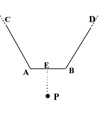
Another two lines, two circumferences, are marked for the second phase of the game:
- at a distance of 20 metres from the base of the "pertse" (PS) there is a circumference track with a 60 centimetre radius (S); inside this circumference the player hits the "tsan" ("servia") up high, to ensure it takes at least 4 seconds to fall;
- around the foot of the "pertse" there is a circumference marking with a radius of 8 and a half metres: the "tsan" pitched by the "servia" must fall within this circle and the player who tries to catch it and pitch it again ("paletà") must do so without leaving this area. The distance reached by the "tsan" is measured using a wheel measuring device (once two players, one from each team, did this as they walked arm in arm in "steps" to measure the distance). Obviously, the marks relating to the first and second phase were divided to ease explanation: all the markings exist simultaneously on the field, from the start of the game.
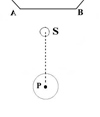



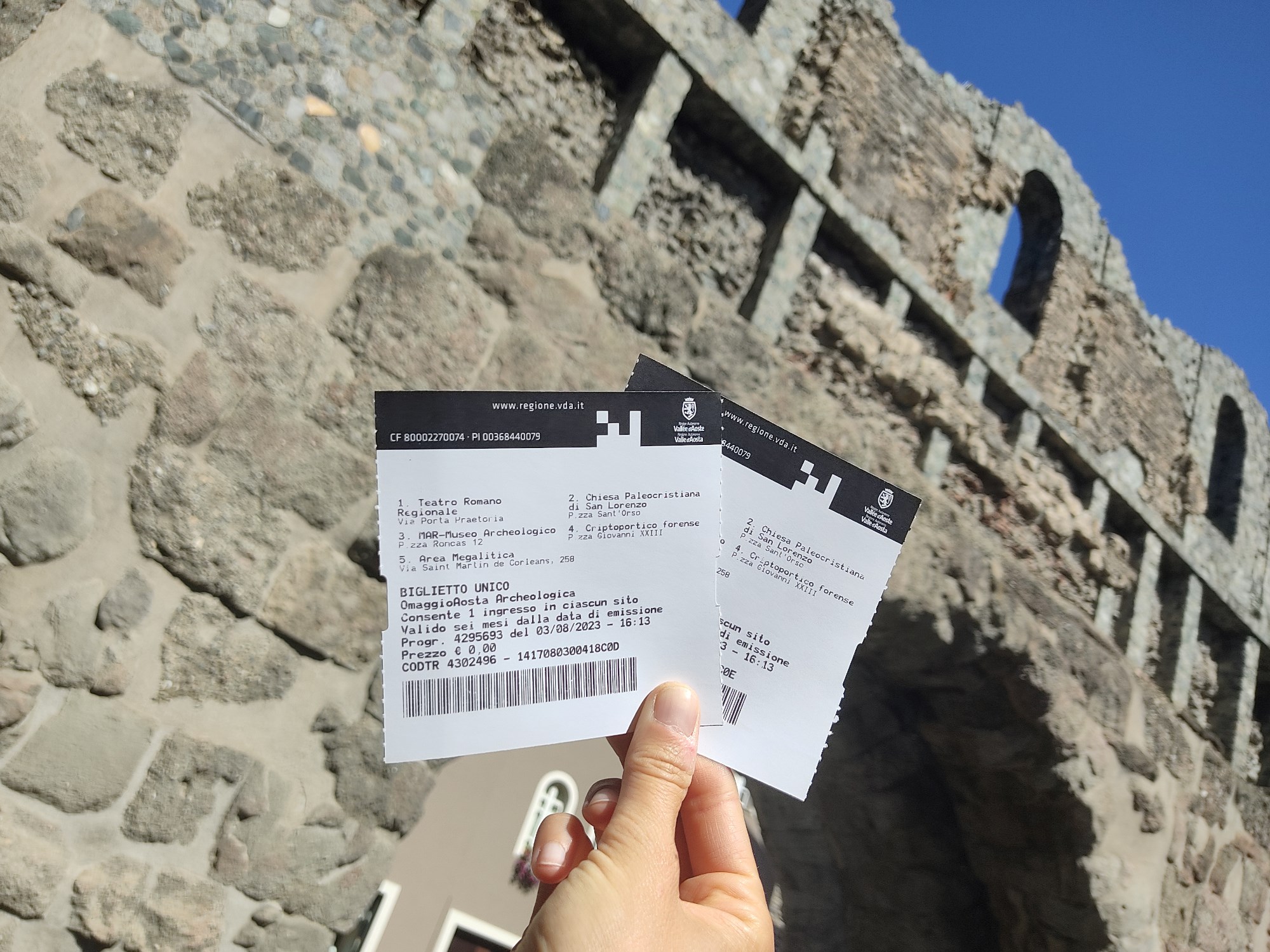
-9424%20(1).jpg?v=638267413400000000)
